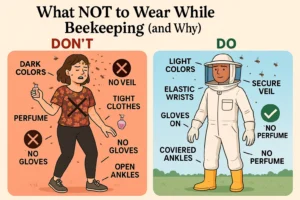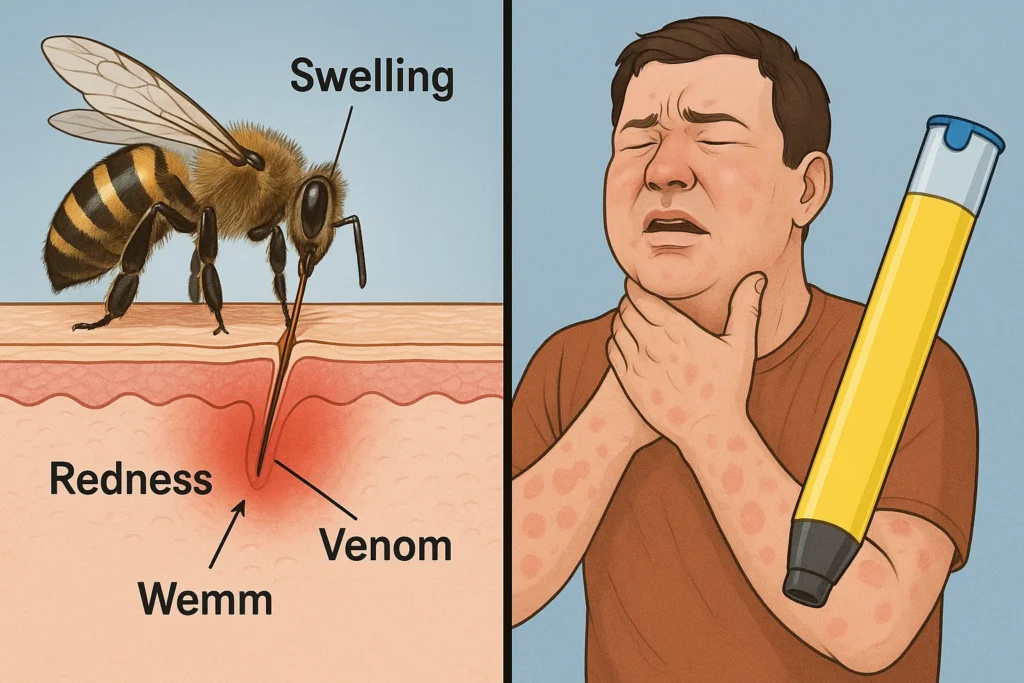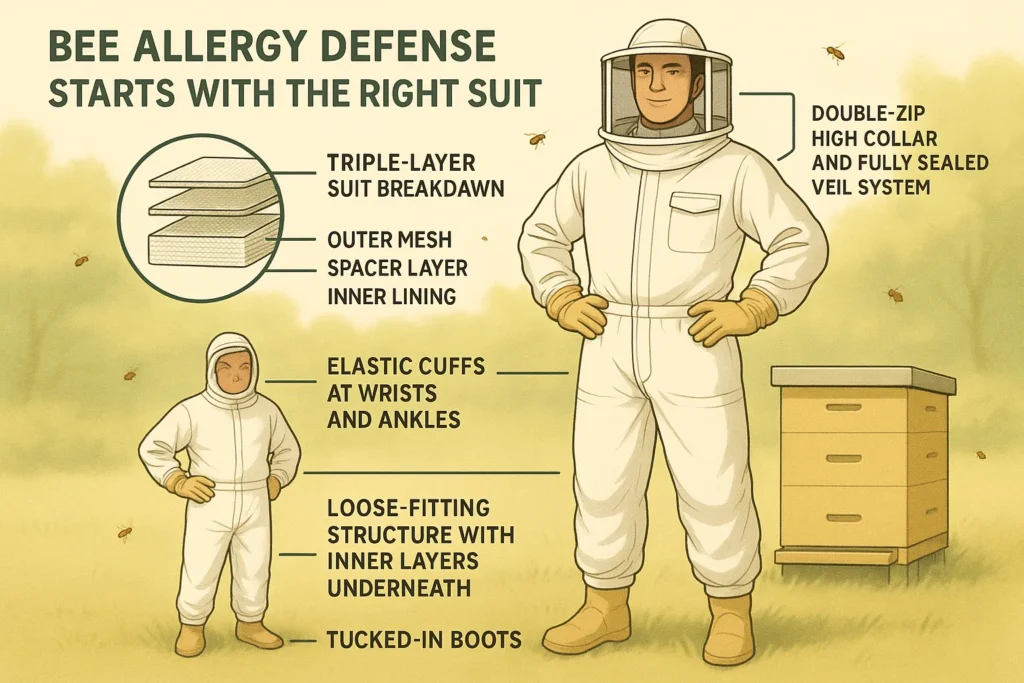
🐝 Gear Up. Stay Safe. Protect the Hive. 🌼
💡 Introduction: It’s Not Just a Sting — It’s a Life-Threatening Risk
For many, a bee sting is just a brief inconvenience — perhaps some swelling, a bit of redness, and then it’s over. However, for those with a Bee Allergy Attack, even a single sting can prove deadly. We’re talking about a full-body immune system response that can escalate into anaphylaxis within minutes.
Allergic responses vary wildly — while some may only get hives, others may experience throat swelling or sudden unconsciousness. That’s why, for allergic beekeepers, wearing a protective suit isn’t just about comfort. It can quite literally mean the difference between life and death.
So here’s the big question:
👉 Can the right beekeeping suit actually protect you from a Bee Allergy Attack?
Let’s explore the answer.
When a bee stings, it injects venom into your skin. Normally, the body handles this without much trouble. But in someone with an allergy, that venom is mistaken for a dangerous invader — triggering a severe immune response.
An EpiPen (epinephrine) can help control the symptoms. However, the best protection is prevention — stopping the sting before it happens.

If you’re allergic to bee venom, your beekeeping suit becomes your lifesaving barrier. Not every suit is built the same, though. Therefore, it’s essential to choose one that’s truly up to the task of defending you from a Bee Allergy Attack.
Standard single-layer suits aren’t ideal for those at high risk. What you need is a triple-layer ventilated suit that features:
💡 Here’s the science: A bee stinger is typically 1.5 to 3 mm long. But a high-quality suit creates a 4 mm+ gap, effectively stopping the stinger from reaching your skin.
Most accidental stings occur inside the suit — when a bee sneaks in through a small gap and stings from within.
To prevent this, look for suits with:
🛠️ Pro tip: Always inspect your suit before using it. Even a tiny tear can create a high-risk opening for a sting — and a possible Bee Allergy Attack.
The face and neck are the most dangerous places to be stung — especially for allergy sufferers. Swelling here can close your airway rapidly.
Make sure your veil:
✅ Advanced suits often include double-veil systems for extra safety and better visibility.
Tight clothing allows stingers to press through fabric and into skin — especially when you bend or kneel. Instead of wearing a snug outfit:
More space means more safety. And more comfort, too!

| ✅ Must-Do | 🔍 Why It Matters |
|---|---|
| Carry an EpiPen | It’s your fastest emergency response |
| Never work alone | A companion can help or call for support |
| Wear base layers | Adds protection in case of a slip-through |
| Inspect gear each time | Small tears = big danger |
| Pack an allergy kit | Include meds, wipes, gloves, water, gel |
🎯 Remember: Even the best gear can’t help if you’re unprepared. A responsible allergic beekeeper treats every inspection like a safety drill.
When shopping for gear, don’t settle for just any brand. Focus on:
👑 Brands like GoldenHiveGears are trusted by allergy-prone beekeepers because they design specifically for sting-blocking safety and comfort.
Yes — the right beekeeping suit can save your life if you’re at risk of a Bee Allergy Attack.
It’s not just about having gear. It’s about wearing the right gear, using it correctly, and staying alert. Treat your suit like your shield — not just a uniform.
So before you head into the hive, ask yourself:
👉 Is this suit really ready to protect me… or am I just hoping for the best?
Because when you live with a bee allergy, your safety depends on that answer.
